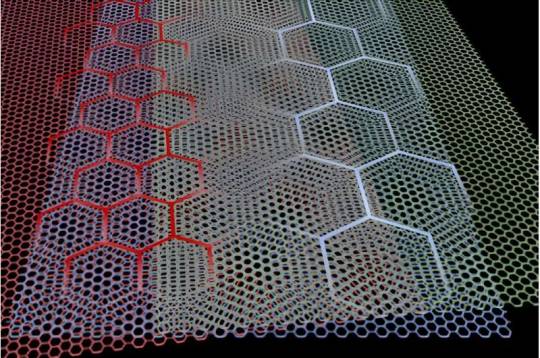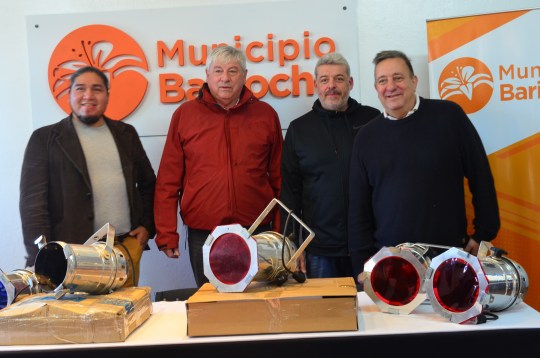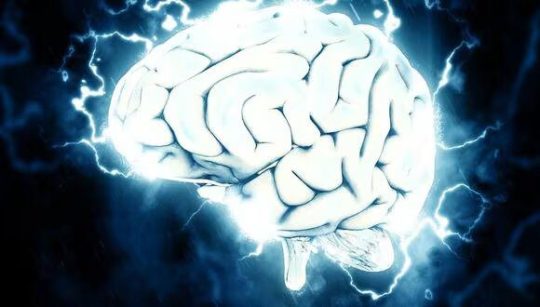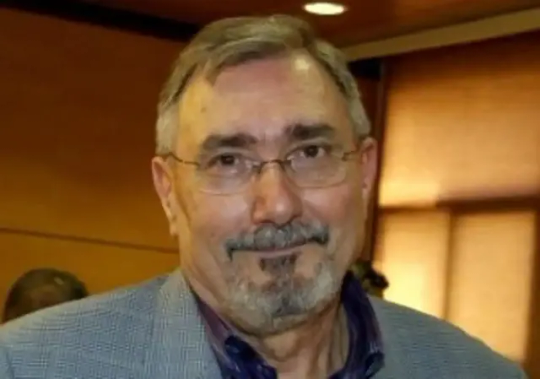#pablo herrero
Text


David De La Mano, Pablo S. Herrero, Hitnes, HERA, Gola Hundun, Airelav, Martin Whatson - Civitacampomarano
#pensieri per la testa#persa tra i miei pensieri#fotografia#foto#scatto fotografico#reportage fotografico#murales#david de la mano#herrero#civitacampomarano#molise#natura#alberi#albero#pablo herrero#gola Hundun#hera#martin whatson#hitnes#Airelav
2 notes
·
View notes
Text
youtube
Y un pequeño tributo también a Pablo Herrero, mitad compositiva junto a José Luis Herreros de Los Relámpagos y coautor con él de grandes éxitos del pop español tales como "Cuéntame", "Tengo Tu Amor", "América", "Libre" o "La Estrella de David", entre muchísimas otras en una lista de créditos impresionante. Le recordamos con dos curiosidades que no definen al famoso grupo instrumental: "Bwana", en la onda Booker T. & The MG´s, el último single que grabaron para Zafiro- Novola en 1968, y la cara B del primer sencillo para el sello RCA en 1969, "Ferrocarril de Montaña", ésta un poco Tornados.
youtube
0 notes
Text
#Spotify#Un Beso Y Una Flor#Nino Bravo#Ibarz Pablo Herrero#Jose Luis Armenteros Sanchez#Augusto Alguero#Universal Music Spain S.L.#Pop#Maryni Callejo#J.L. Armenteros#José Torregrosa#Juan Hidalgo
0 notes
Text
If Stonemasons Could Talk
What would they say? From hand chiseling blocks of stone to shaping, polishing and leveling stones with the use of a wide range of sophisticated power tools, these unsung heroes have been romancing the stone since the ancient times, contributing to the development of historic and modern structures. David de la Mano and Pablo S. Herrero pay tribute to these anonymous wizards by giving them a…

View On WordPress
0 notes
Text
La Orquesta Escuela de Berisso se presentó en el Teatro Argentino
#Cultura | La #OrquestaEscuela de #Berisso se presentó en el #TeatroArgentino
El pasado viernes, la formación inicial de la Orquesta Escuela de Berisso se presentó en las escalinatas del Teatro Argentino de La Plata con la propuesta “Payadores y Raperos Sinfónicos”.
El espectáculo de acceso libre y gratuito fue organizado de manera conjunta entre el Municipio de Berisso, la Asociación Civil “Orquestar” y el Instituto Cultural de la provincia de Buenos Aires.En el encuentro…

View On WordPress
#Asociación Civil Orquestar#Axel Kicillof#Beatriz &8220;Teté&8221; Grasso#Berisso#cultura#David Tokar#Emanuel Gabotto#Eva Piermaría#Fabián Cagliardi#Florencia Saintout#Instituto Cultural#Juan Carlos Herrero#Juan Pablo Holubyez#La Plata#Lujo Mc#Mustafá Yoda#Orquesta Escuela#Orquesta Escuela de Berisso#Teatro Argentino#Underdann
0 notes
Text

Physicists coax superconductivity and more from quasicrystals
In research that could jumpstart interest into an enigmatic class of materials known as quasicrystals, MIT scientists and colleagues have discovered a relatively simple, flexible way to create new atomically thin versions that can be tuned for important phenomena. In work reported in Nature they describe doing just that to make the materials exhibit superconductivity and more.
The research introduces a new platform for not only learning more about quasicrystals, but also exploring exotic phenomena that can be hard to study but could lead to important applications and new physics. For example, a better understanding of superconductivity, in which electrons pass through a material with no resistance, could allow much more efficient electronic devices.
The work brings together two previously unconnected fields: quasicrystals and twistronics. The latter was pioneered at MIT only about five years ago by Pablo Jarillo-Herrero, the Cecil and Ida Green Professor of Physics at MIT and corresponding author of the paper.
Read more.
23 notes
·
View notes
Text

Historia de un padre y una hija artistas.
Pablo Gargallo, nacido en Maella (Zaragoza), de origen humilde, hijo de herrero, llegó a ser uno de los escultores más innovadores y vanguardistas del siglo XX, amigo de Picasso, Chagall, Miró o Juan Gris. Murió en 1934, en el apogeo de su carrera, de una neumonía fulminante, cuando su concepto de esculpir el vacío empezaba a revolucionar el arte europeo.
Su hija Pierrette era espectadora privilegiada de su proceso creativo. Creció entre la arcilla, el yeso, los cartones y las chapas metálicas de las obras de su padre.
Tras la muerte de Pablo, Pierrette y su madre Magali siguieron viviendo en París. Las autoridades de la ocupación les arrebataron la obra de Gargallo. Fueron denunciadas y recluidas en el campo de internamiento de Rieucros, antes de expulsarlas a España.
Pierrette consiguió vivir de su trabajo artístico en la dura posguerra y recuperar las esculturas de su padre de los sótanos del Petit Palais en 1947. Sus esfuerzos salvaron del olvido la obra de Pablo Gargallo. Infatigable, organizó exposiciones y consiguió que su obra entrase a formar parte de colecciones permanentes en todo el mundo. Ella quiso que hubiera un museo monográfico en Zaragoza, una de las joyas de la ciudad.
Museo Pablo Gargallo Zaragoza PabloGargallo PierretteGargallo
6 notes
·
View notes
Text
Municipio recibió una potencia, consola, compactera y luces de parte GRISU
Este jueves la Municipalidad de Bariloche recibió una donación de una reconocida discoteca de la ciudad, quien aportó varios elementos que se utilizarán en distintos eventos.
Según explicó el secretario de Turismo municipal, Sergio Herrero, la donación llego de manos de Pablo Vidal, propietario de Grisú, y estuvo presente el intendente Walter Cortés.
De esta manera, el Municipio recibió una…

View On WordPress
0 notes
Text
Il nuovo strano comportamento degli elettroni entusiasma i fisici
Scoperta rivoluzionaria: comportamento insolito degli elettroni Due gruppi di ricerca hanno recentemente osservato che gli elettroni possono presentare comportamenti con cariche frazionarie, senza l’influenza di campi magnetici esterni. Questa scoperta, denominata “effetto Hall anomalo quantistico frazionario”, potrebbe avere implicazioni significative nella fisica quantistica e nello sviluppo di computer quantistici. Implicazioni pratiche ed entusiasmo scientifico La capacità degli elettroni di assumere cariche non convenzionali potrebbe aprire nuove frontiere nella ricerca e nell’applicazione della fisica quantistica. Questa scoperta ha suscitato grande entusiasmo tra la comunità scientifica, con il fisico Pablo Jarillo-Herrero che esprime ottimismo sulle potenziali applicazioni future di questa nuova comprensione.
0 notes
Text
New brain-like transistor mimics human intelligence - Technology Org
New Post has been published on https://thedigitalinsider.com/new-brain-like-transistor-mimics-human-intelligence-technology-org/
New brain-like transistor mimics human intelligence - Technology Org
Taking inspiration from the human brain, researchers have developed a new synaptic transistor capable of higher-level thinking.
An artistic interpretation of brain-like computing. Image credit: Xiaodong Yan/Northwestern University
Designed by researchers at Northwestern University, Boston College and the Massachusetts Institute of Technology (MIT), the device simultaneously processes and stores information just like the human brain. In new experiments, the researchers demonstrated that the transistor goes beyond simple machine-learning tasks to categorize data and is capable of performing associative learning.
Although previous studies have leveraged similar strategies to develop brain-like computing devices, those transistors cannot function outside cryogenic temperatures. The new device, by contrast, is stable at room temperatures. It also operates at fast speeds, consumes very little energy and retains stored information even when power is removed, making it ideal for real-world applications.
The study was published in the journal Nature.
“The brain has a fundamentally different architecture than a digital computer,” said Northwestern’s Mark C. Hersam, who co-led the research. “In a digital computer, data move back and forth between a microprocessor and memory, which consumes a lot of energy and creates a bottleneck when attempting to perform multiple tasks at the same time. On the other hand, in the brain, memory and information processing are co-located and fully integrated, resulting in orders of magnitude higher energy efficiency. Our synaptic transistor similarly achieves concurrent memory and information processing functionality to more faithfully mimic the brain.”
Hersam is the Walter P. Murphy Professor of Materials Science and Engineering at Northwestern’s McCormick School of Engineering, professor of medicine at Northwestern University Feinberg School of Medicine and professor of chemistry at Northwestern’s Weinberg College of Arts and Sciences. He also is chair of the department of materials science and engineering, director of the Materials Research Science and Engineering Center and member of the International Institute for Nanotechnology. Hersam co-led the research with Qiong Ma of Boston College and Pablo Jarillo-Herrero of MIT.
Recent advances in artificial intelligence (AI) have motivated researchers to develop computers that operate more like the human brain. Conventional, digital computing systems have separate processing and storage units, causing data-intensive tasks to devour large amounts of energy. With smart devices continuously collecting vast quantities of data, researchers are scrambling to uncover new ways to process it all without consuming an increasing amount of power. Currently, the memory resistor, or “memristor,” is the most well-developed technology that can perform combined processing and memory function. But memristors still suffer from energy costly switching.
“For several decades, the paradigm in electronics has been to build everything out of transistors and use the same silicon architecture,” Hersam said. “Significant progress has been made by simply packing more and more transistors into integrated circuits. You cannot deny the success of that strategy, but it comes at the cost of high power consumption, especially in the current era of big data where digital computing is on track to overwhelm the grid. We have to rethink computing hardware, especially for AI and machine-learning tasks.”
To rethink this paradigm, Hersam and his team explored new advances in the physics of moiré patterns, a type of geometrical design that arises when two patterns are layered on top of one another. When two-dimensional materials are stacked, new properties emerge that do not exist in one layer alone. And when those layers are twisted to form a moiré pattern, unprecedented tunability of electronic properties becomes possible.
For the new device, the researchers combined two different types of atomically thin materials: bilayer graphene and hexagonal boron nitride. When stacked and purposefully twisted, the materials formed a moiré pattern. By rotating one layer relative to the other, the researchers could achieve different electronic properties in each graphene layer even though only atomic-scale dimensions separate them. With the right choice of twist, researchers harnessed moiré physics for neuromorphic functionality at room temperature.
“With twist as a new design parameter, the number of permutations is vast,” Hersam said. “Graphene and hexagonal boron nitride are very similar structurally but just different enough that you get exceptionally strong moiré effects.”
To test the transistor, Hersam and his team trained it to recognize similar — but not identical — patterns. Just earlier this month, Hersam introduced a new nanoelectronic device capable of analyzing and categorizing data in an energy-efficient manner, but his new synaptic transistor takes machine learning and AI one leap further.
“If AI is meant to mimic human thought, one of the lowest-level tasks would be to classify data, which is simply sorting into bins,” Hersam said. “Our goal is to advance AI technology in the direction of higher-level thinking. Real-world conditions are often more complicated than current AI algorithms can handle, so we tested our new devices under more complicated conditions to verify their advanced capabilities.”
First the researchers showed the device one pattern: 000 (three zeros in a row). Then, they asked the AI to identify similar patterns, such as 111 or 101. “If we trained it to detect 000 and then gave it 111 and 101, it knows 111 is more similar to 000 than 101,” Hersam explained. “000 and 111 are not exactly the same, but both are three digits in a row. Recognizing that similarity is a higher-level form of cognition known as associative learning.”
In experiments, the new synaptic transistor successfully recognized similar patterns, displaying its associative memory. Even when the researchers threw curveballs — like giving it incomplete patterns — it still successfully demonstrated associative learning.
“Current AI can be easy to confuse, which can cause major problems in certain contexts,” Hersam said. “Imagine if you are using a self-driving vehicle, and the weather conditions deteriorate. The vehicle might not be able to interpret the more complicated sensor data as well as a human driver could. But even when we gave our transistor imperfect input, it could still identify the correct response.”
Source: Northwestern University
You can offer your link to a page which is relevant to the topic of this post.
#000#A.I. & Neural Networks news#ai#Algorithms#applications#architecture#artificial#Artificial Intelligence#artificial intelligence (AI)#Arts#atomic#Big Data#boron nitride#Brain#chemistry#cognition#college#computer#computers#computing#computing systems#data#Design#devices#dimensions#direction#easy#effects#efficiency#electronic
0 notes
Text
Crean un transistor similar a un cerebro capaz de ‘pensar’ a un nivel superior

El dispositivo va más allá de las simples tareas de aprendizaje automático para categorizar datos, y es capaz de realizar un aprendizaje asociativo.
Inspirándose en el cerebro humano, un equipo científico ha desarrollado un nuevo transistor sináptico capaz de ‘pensar’ a un nivel superior; el dispositivo puede procesar y almacenar información simultáneamente, igual que nuestro cerebro.
La descripción del transistor que trata de imitar la inteligencia humana y que funciona a temperatura ambiente se publica en la revista Nature, en un artículo en el que los investigadores demuestran que el dispositivo va más allá de las simples tareas de aprendizaje automático para categorizar datos, y es capaz de realizar un aprendizaje asociativo.
Aunque estudios anteriores han aprovechado estrategias similares para desarrollar dispositivos informáticos parecidos al cerebro, esos transistores no pueden funcionar fuera de temperaturas criogénicas.
El nuevo modelo, en cambio, es estable a temperatura ambiente y además funciona a gran velocidad, consume muy poca energía y conserva la información almacenada incluso cuando se le retira la alimentación, “lo que lo hace ideal para aplicaciones del mundo real”.
La investigación está codirigida por Mark C. Hersam, de la Universidad de Northwestern, y por el español Pablo Jarillo-Herrero, del Instituto Tecnológico de Massachusetts (MIT).
Los recientes avances en inteligencia artificial (IA) han motivado a los investigadores a desarrollar ordenadores que funcionen de forma más parecida al cerebro humano, recuerda un comunicado de Northwestern.
Durante varias décadas, apunta Hersam, el paradigma de la electrónica ha sido construirlo todo con transistores -semiconductores que rectifican y amplifican impulsos eléctricos- y utilizar la misma arquitectura de silicio.
“Se ha avanzado mucho simplemente introduciendo más y más transistores en los circuitos integrados. No se puede negar el éxito de esa estrategia, pero tiene el coste de un elevado consumo de energía, especialmente en la actual era de los grandes datos en la que la informática digital va camino de desbordar la red”.
Por eso, hay que replantearse “el hardware informático, especialmente para tareas de IA y aprendizaje automático”.
Los sistemas informáticos digitales convencionales tienen unidades de procesamiento y almacenamiento separadas, lo que precisamente hace que las tareas intensivas en datos devoren grandes cantidades de energía.
En cambio en el cerebro, explica Hersam, la memoria y el procesamiento de la información están ubicados en el mismo lugar y totalmente integrados, lo que se traduce en una eficiencia energética de órdenes de magnitud superiores. “Nuestro transistor sináptico logra de forma similar la funcionalidad concurrente de memoria y procesamiento de la información para imitar más fielmente al cerebro”.
Para lograrlo, el equipo exploró la física de los patrones de moiré, un tipo de diseño geométrico que surge cuando dos patrones se superponen en capas, y combinó dos tipos diferentes de materiales atómicamente finos: el grafeno bicapa y el nitruro de boro hexagonal.
Cuando se apilan materiales bidimensionales -como el grafeno-, surgen nuevas propiedades que no existen en una sola capa y cuando esas capas se retuercen para formar el efecto moiré es posible una sintonización sin precedentes de las propiedades electrónicas.
Así, al girar una capa con respecto a la otra, los investigadores lograron propiedades electrónicas diferentes en cada capa de grafeno, aunque solo estuvieran separadas por dimensiones a escala atómica.
“Con la torsión como nuevo parámetro de diseño, el número de permutaciones es enorme”, afirma Hersam. “El grafeno y el nitruro de boro hexagonal son muy similares estructuralmente, pero lo suficientemente diferentes como para obtener efectos moiré excepcionalmente potentes”, añade.
Para probar el transistor, el equipo lo entrenó para reconocer patrones similares, pero no idénticos.
En primer lugar, mostró al dispositivo el patrón 000 y a continuación pidió a la IA que identificara patrones similares, como 111 o 101.
“Si lo entrenamos para detectar 000 y luego le damos 111 y 101, sabe que 111 es más parecido a 000 que 101″, subraya Hersam, para quien reconocer esa similitud es una forma superior de cognición conocida como aprendizaje asociativo.
https://ntv365.com/ciencia-y-tecnologia/el-invento-que-retirara-el-aire-acondicionado-enfriara-la-casa-hasta-15-grados/
Read the full article
0 notes
Text
Muere el compositor Pablo Herrero, coautor de 'Libertad sin ira', 'Eva Maria' o 'Un beso y una flor'
El compositor y letrista Pablo Herrero (Madrid, 1942), coautor de conocidos temas como ‘Libertad sin ira’, ‘Como una ola’, ‘Eva María’ o ‘Un beso y una flor’ ha fallecido este martes, según ha informado la SGAE, entidad de la que fue vicepresidente y en la que tenía registradas casi 800 obras.
Pablo Herrero fue autor de “un repertorio esencial de la música española” y deja un “imprescindible…

View On WordPress
0 notes
Link
0 notes

